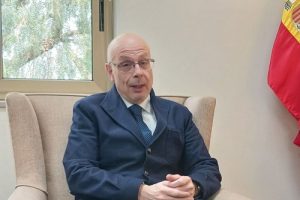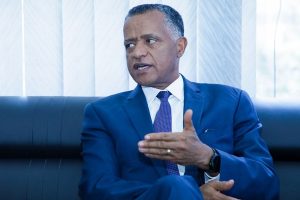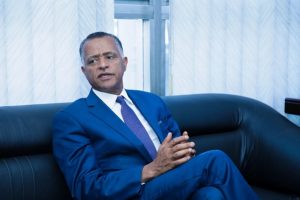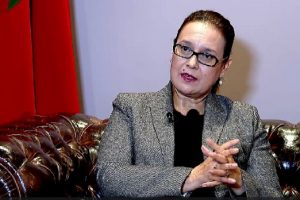
Prevention of climate change is the top priority of governments, international organizations, communities, and even individuals as it has become an imminent threat to their existence. The outcomes of climate change are knocking on the doors of everyone everywhere as they manifest themselves in the form of floods, drought, landslides, and other disasters.
One of the causes of climate change in all corners of the world is the production of nonrenewable energy from sources like fossil fuels which releases a significant amount of carbon into the atmosphere which in turn pollutes the air. Therefore, the world has reached a mutual understanding that it is a must to significantly decrease the utilization of nonrenewable or unclean sources of energy and transit to more sustainable, renewable sources of energy.
Due to its capacity to generate clean and renewable energy from sources like hydroelectric power, wind farms, solar panels, and geothermal energy Ethiopia is likely to contribute duly to the transition to clean energy at local and regional levels.
In order to get further insight on the nation’s endeavor in ensuring clean energy transition, The Ethiopian Herald approached Dr. Eng. Habtamu Itefa who has been serving as Minister of Water and Energy of the Federal Democratic Republic of Ethiopia Since October 2021. He got his first degree in 1999 and his second degree in 2006 in Irrigation Engineering both from Arba Minch University, Ethiopia. He got his PhD in Hydraulic Engineering from Stuttgart University, Germany in 2011.
He began his career as a practicing engineer at the Benishangul-Gumuz Regional Water Bureau and then joined the academic sphere where he lectured at Arba Minch University and later on at Addis Ababa Science and Technology University, respectively.
He also served in different leadership positions from school dean to University Vice President. He then went on to serve as Deputy Head of the Urban and Housing Bureau of the Oromia Regional State from 2016 to 2017; Director-General of the Oromia Regional State Road Authority from 2017 to 2019 and Head of the Oromia Regional State Water and Energy Resource Development Bureau from 2019 up until his present Ministerial appointment to lead the Ministry of Water and Energy of the Federal Democratic Republic of Ethiopia. The Ethiopian Herald had a brief stay
During his interview with The Ethiopian Herald, Dr Eng. Habtamu has elaborated on the significance of the Grand Ethiopian Renaissance Dam (GERD) for Ethiopian unity, development, downstream countries, and mitigating climate change.
Have a nice read
As we all know, the Great Ethiopian Renaissance Dam (GERD) is a project that began with several goals. So, what is the present state of the dam?
The Grand Ethiopian Renaissance Dam (GERD) is a big hydropower project. Ethiopians see it as their showpiece project. The dam was built to utilize Ethiopia’s plentiful resources, such as water. Its primary function is hydroelectric power generation. It is one of Africa’s largest hydroelectric power plants. The dam is critical to Ethiopia’s economic development since it increases access to energy, fosters industrial expansion, and promotes regional development.
The construction of the dam was meticulously planned to avoid causing considerable harm to downstream countries. It is also a necessary dam for environmental concerns, favorable influence on the Nile ecology, and water availability for agriculture in downstream nations. As of my last update, GERD is operating in stages. The retention of water and generation of electric power is now underway. This is the current state of GERD.
As you are aware, the dam has been successfully filled with water and has begun to generate power. What effort has been made to raise the dam to this level? Specifically, what kind of difficulties were identified before and after the reformist government took power?
GERD is Ethiopia’s largest project. It was a project that the country’s leaders had wanted to work on but had postponed for a variety of reasons, including lack of capacity. As a result, not only the leaders but the entire Ethiopian people regretted it. There was no unspoken verse, song, or saying that expressed their frustration. When the time came for the dam to be built, led by former Prime Minister Meles Zenawi, every Ethiopian enjoyed and actively participated in the construction of the dam to the greatest extent.
However, due to a serious project management problem, GERD had reached a stage where it could no longer be Ethiopia’s renaissance project. Recognizing this, the reform government set the restoration of the Renaissance as its primary goal. Thus, Prime Minister Abiy Ahmed’s decisive actions transformed the weaker GERD work into a successful work by following it uniquely, guiding it, and taking significant measures.
You said GERD had faced problems during its construction time. What problems did it encounter? How was the issue resolved?
Making the Renaissance Dam Renaissance is one of the things the reforming government has accomplished. There are electromechanical and civil components to the dam which requires a great deal of expertise and understanding about this component. Nonetheless, a local company named METEC was awarded the electro-mechanical project by the previous administration. While it is commendable to offer local companies, such as METEC, an opportunity to work on construction, doing such a large-scale project as a nation was inappropriate. With what little money it had, the government gave priority to the construction of GERD as its first priority. Now, it reaches a stage where it generates power
If the reformist government believed that giving inexperienced enterprises a chance was justified; change the contracts and project management, what results did you obtain?
The construction of the dam work done is not an easy task. After changing the project management and contractors, concrete results are obtained. There has been a lot of diplomatic effort done. Besides, the dam’s consecutive water filling has been completed successfully. So far, multiple turbines have been working and generating 1400 MW.
Currently, GERD retains 66.5 billion cubic meters of the 74 billion cubic meters of water planned to be used to generate electricity. The country has now reached a point where the dam can keep the remaining 7.5 billion cubic meters of water. This outcome was not obtained easily. The dam’s construction was accomplished thanks to Prime Minister Abiy Ahmed’s determined leadership and the ongoing support of the Ethiopian people, the diaspora, and so on. Many Ethiopians, particularly security forces, have been killed as a result of anti-peace groups and forces that oppose Ethiopia’s growth and dam building. Furthermore, media organizations and citizens who care about Ethiopia make significant contributions to the construction of the GERD. Accordingly, the Renaissance Dam has reached a level where it is irreversible.
Why is the GERD cited as an illustration of Ethiopia’s period of transition? Why is it considered a representation of Ethiopian togetherness and unity?
Ethiopia has a large amount of arable land, as well as human and natural resources, particularly water. Since the country’s inception, numerous things have been planned to develop the country, nevertheless, many plans have failed owing to a lack of concerted efforts, dedication, and strategic leadership. Things that have been considered for millennia but not implemented. However, the current government’s move and dedication to development help the country to gain various results. That is why we refer to Ethiopia as being in transition. Besides, the present government’s clear orientation promotes the prosperity of Ethiopians.
Among other things, the country’s energy supply initiatives deserve recognition. The country’s electricity supply is critical to creating job opportunities for youth. It opens up significant opportunities for industry to develop and replace imported items domestically. And the electricity supply is being designed to improve the lives of all citizens.
When we say that GERD is an expression of Ethiopian unity and solidarity, we mean that all Ethiopians embrace it, regardless of their differences. Although there are differences of opinion in the country on political and social concerns, the dam is a project that allows all citizens to have a shared understanding of their country’s affairs. It also serves as an excellent teaching tool since GERD demonstrates that if Ethiopians work together for our country’s development, peace, and prosperity, we may achieve greater success by completing more Renaissance Dams, diverse megaprojects, and development works. It is also a project that sends a strong statement that Ethiopia’s unity and growth cannot be easily disrupted. It is a project that demonstrates Ethiopians’ ability to stick together and work toward a shared goal not only during times of crisis or conflict but also during times of development.
Ethiopia stated that the dam is significant not just for Ethiopia, but also for the world ecology and downstream countries. What do you mean by “it won’t hurt the downstream countries”? Is there any substantial influence on them since the dam began to retain water?
GERD is a project that has benefited not just Ethiopians, but also other countries, particularly downstream countries. For example, Ethiopia is experiencing heavy rains this year. If there had been no GERD, we would have heard news or stories of disastrous floods in downstream nations, particularly Sudan. However, GERD actually lowered the population’s susceptibility to floods.
In addition, the water discharged throughout the summer months provides downstream nations with consistent and sustainable water for agriculture. Ethiopia now releases four times more water from the dam during the summer than Sudan did get before GERD. Hence, more irrigation work will be possible. Besides, the considerable risk of floods has been reduced and prevented. And as of right now, neither the dam nor its effects are affecting them.
What experiences do you think the nation gained from the construction of GERD?
As you are aware, the dam is large and quite complex. As a result, we have been instructed not to build this dam. However, GERD fosters a sense of possibility when we work together to develop a sound project such as the dam. It also instills hope in Ethiopians that their lives could be improved if they were together. The country has also gained the capacity to do activities such as renaissance. In terms of diplomacy, the country’s negotiating capacity has become strong and growing. In general, GERD teaches us how to solve old-age developmental questions.
Ethiopia’s water resources are reported to have been underutilized for generations. Nonetheless, the nation’s water resources are beginning to be utilized by the present government. So, what does it imply for Ethiopia to use other water resources in addition to the Nile?
Looking back, Ethiopia did not use its water resources for many millennia. Because of this, we are well-known around for poverty, drought, and other problems. However, today the nation is able to produce and export summer wheat because of its water resources. It turned from being unable to use the nation’s water resources to being able to use them by building GERD on the Nile River. In addition, the nation constructed and generated 1400 megawatts. As a result, the GERD’s development has reached a point where the dam’s water is available for tourism, fishing, and other uses. This indicates a lot of promise and inspiration are available for the future.
What are the benefits of Ethiopian renewable energy generation from renewable sources in terms of climate change mitigation? What should the world community do to help Ethiopia’s greenery efforts?
Climate change is the biggest challenge to the world right now. It is caused by things that are mostly human. Energy generating is among those that contribute to climate change. Climate change occurs not by developing countries but also in the great contribution of developed and industrialized nations. In particular, Ethiopia is planting and caring for a billion saplings every year through the Green Legacy Initiative program. Realizing this, the international community should support and help Ethiopia.
Climate change is the world’s most pressing concern right now. It is caused mostly by human activities. Energy generation is one of the factors contributing to climate change. Climate change is caused not just by poor countries, but also by the large contributions of rich and industrialized nations. Unlike other countries, Ethiopia puts a clear direction not only to avoid pollution but also to clean up the polluted climate via green legacy initiatives. Every year, Ethiopia through the Green Legacy Initiative program plants and cares for a billion seedlings. Recognizing this, the international community should assist and support Ethiopia.
Thank you very much for your time and collaboration!
You’re most welcome!
BY EPHREM ANDARGACHEW
THE ETHIOPIAN HERALD SATURDAY 7 SEPTEMBER 2024





